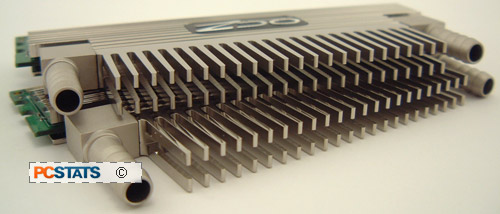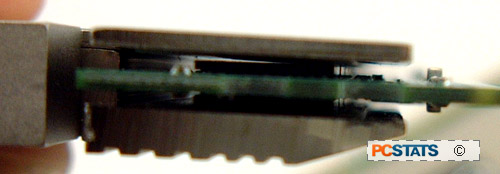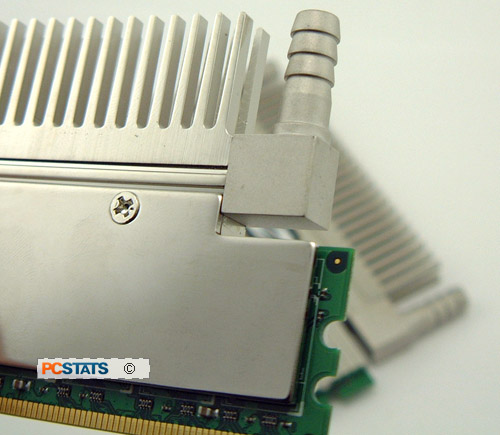I have to wonder how running the watercooling circuit through the
small 1/4" ID channel of the memory waterblocks will affect flowrates (when
there is a reservoir). If the memory is placed last in line, the water may not
be cooling the memory at all, as it will have absorbed a lot of heat from
the processor and/or videocard by that point.
Next, how is one to clean out the gunk that builds over time? Conventional
waterblocks can be disassembled, the same can't be said for the FlexXLC
waterblock, at least without destroying it.

Putting all that aside, I also have to complain about how
the OCZ PC2-9200 FlexXLC Edition memory is put together, at least partially. The
main body of the heatspreader makes good contact with one half of the memory module, but on the flip side the retaining plate only touches the edge of the DDR2 BGA DRAM. About a third of the DRAMs on this side of the module are not in contact with the thermal pad that is supplied.

All in all, while watercooling is memory is definitely
novel and neat looking, I don't think it's really necessary. DDR2 memory does
not generate enough heat to warrant the setting up a watercooling loop just
for the memory. If you're adding it to an existing watercooling
setup, you may be in fact heating the memory up, or sacrificing flow rates
for other hardware.

Yeah it's neat to see memory with waterblocks installed... but don't feel
obligated to get a watercooling loop if you're using OCZ's PC2-9200 FlexXLC
Edition memory. PCSTATS was able to overclock it quite nicely with air cooling
alone, so keep that in mind.
PCSTATS Test Methodology:
On Intel Socket 775 Core 2 Duo
test systems, we're only interested in seeing how high we can go with the DDR-2
memory running 1:1, as running with other dividers puts the overclocking
bottleneck elsewhere and not with the system memory. The DDR-2 RAM latency must
run at its lowest possible setting, as quick access is more important to the CPU
design. Just for arguments sake, we will also be conducting overclocking tests
to see how high the memory will go with lax timings (5-5-5-15), although we will
only benchmark the system with the tight memory timings mentioned above. Let's
get started!
